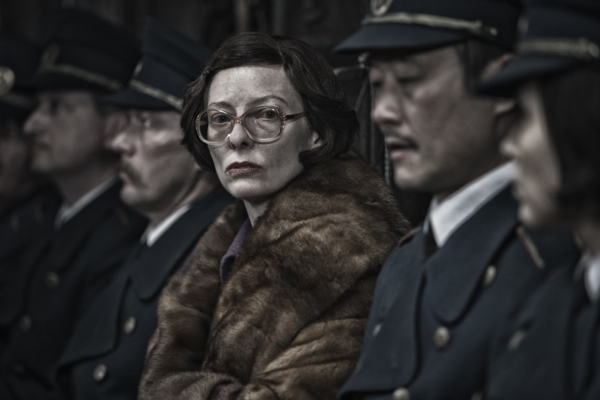Movie review by Greg Carlson
Joon-ho Bong’s English-language debut “Snowpiercer” is a berserk conglomeration as likely to win a host of new fans as it is to put off some of the director’s longtime admirers. Turning on the talented Korean filmmaker’s deep understanding of screen space and the timeless cinematic allure of the locomotive, the movie is freely adapted from Jacques Lob’s post-apocalyptic graphic novel “Le Transperceneige,” published in 1982 with artwork by Jean-Marc Rochette. “Snowpiercer” is the name of the train that bears the only survivors of devastating climate change on an ice-encrusted Earth. Confined to the relative safety of the machine’s long line of cars, the remaining humans are divided into the same kind of instantly identifiable haves and have-nots symbolized by steerage-bound Jack and first class Rose in James Cameron’s “Titanic.”
Like Cameron’s film, “Snowpiercer” works partially as a disaster movie about people trapped in a massive machine, trading the hubris of the unsinkable, real-world engineering marvel for the outright fantasy of a chugging, perpetual motion choo choo. The demented idea that the shark-like Snowpiercer must forever barrel forward or die is presented with enough imagination to abet the necessary suspension of disbelief. “Snowpiercer” also makes use of the “city in a bottle” trope seen in “Logan’s Run” – especially in two key aspects: the deeply instilled fear/belief that life outside the shelter is uninhabitable, and the grim politics that population equilibrium must be maintained to protect the resources required to sustain a limited number of passengers.
Bong re-teams with Kang-ho Song and Ah-Sung Ko, assembling an ensemble that also includes Chris Evans, Octavia Spencer, Tilda Swinton, Ed Harris, John Hurt, Jamie Bell, Ewen Bremner, and Alison Pill. Swinton makes the deepest impression as Orwellian bureaucrat Mason, whose thick glasses, severe coiffure, and ghastly dentures evoke a mutant Margaret Thatcher. Her character belongs to a universe altogether different from the one inhabited by Evans’s dour revolutionary. And even though Evans is the film’s front and center lead, the father-daughter team played by Song and Ko emerges as parallel heroes. In contrast to Swinton’s outré facade, the great Song underplays his apparently drug-addicted picklock, holding back the manic energy he brought to Jee-woon Kim’s wild Sergio Leone homage “The Good, the Bad, the Weird.”
By far the most enchanting element of “Snowpiercer” arrives courtesy of the eye-popping design of each railcar the rebels breach on their way to the engine. As the hardscrabble caboose-dwellers claw their way from the tail-end ghetto to the opulent cabins reserved for the wealthy elite, Bong escalates the tension in a series of set-pieces. Unsurprisingly, the filmmaker is not stingy with the violence and mayhem, and the movie’s most memorable scenes include brute force and bloodletting. In one, we learn how the Snowpiercer’s enforcers punish some infractions by ghoulishly freezing off limbs. In another, unglued teacher Pill’s primary-school classroom erupts in what turns out to be a lesson in small arms. Despite Bong’s firmly established sci-fi tone, the sight of so much gunfire around children disturbingly calls to mind the proliferation of American school shootings.
Working with screenwriter Kelly Masterson, Bong jettisons many of Lob’s foundational plot elements, dispensing with the novel’s central relationship between a desperate prisoner and an aid worker/activist. The filmmaker runs out of steam even before the movie’s clunky final movement, a tiresome disquisition of unnecessary explanation that cannot be salvaged by the presence of the usually dependable Ed Harris. As Harris yammers on and on, justifying the ugly “necessity” of his crazy train’s fascist state while he lounges in a silk bathrobe and fries a steak, “Snowpiercer” is drained of its vitality – something that never happened during “Mother,” Bong’s superior previous feature.
